 |  |
By David Kier
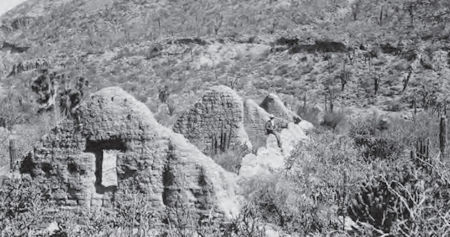
When Spanish missions were established in Baja California, several years would often pass by between each new mission. Loreto was the first successful mission, founded in 1697, followed by San Javier in 1699. Six years passed before the next two missions were founded at Ligüí and Mulegé. Three more years passed before the San José mission at Comondú was founded. Then twelve years passed with no new missions, until 1720 when three missions were founded (at La Purísima, La Paz, and Guadalupe). Lack of Jesuit missionaries, funds to build new missions, and political concerns, all weighed in on when a new mission could be established. The Jesuits founded 17 missions in California (what we call Baja California, today) during their 70 years on the peninsula. The Franciscans and Dominicans who replaced the Jesuits, added 10 more missions in Baja California. Each mission could eventually have several outpost chapels and farms some distance away. These satellites of the head mission were known as visitas.
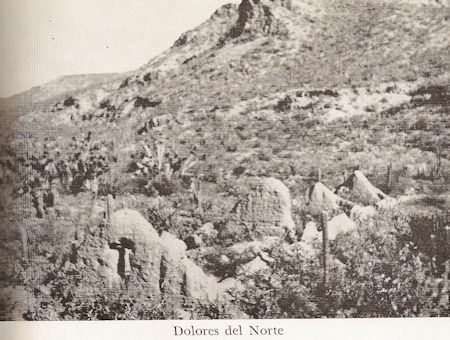
The Native Californians would come in great numbers to the missions. Originally it was out of curiosity and later for instruction and conversion. The Natives were able to trade their labor for meals and security. Buildings at the missions, constructing El Camino Real, and farming the land, were all tasks made possible with the labor from the Natives. Providing enough food often proved difficult for the missionaries. As a remedy, instead of all the Indians traveling from their distant rancherías (villages) to the cabecera (head mission), the Jesuit missionaries established pueblos de visita (“visitas” for short) at some Native villages that were located where water was available to grow crops or raise livestock.
Some of these visitas would later be developed into new missions. Missions sometimes relocated to one of their visitas that proved to be more productive or more accessible. San Javier, Comondú, and Dolores are examples of missions that relocated to one of their visitas. Santa Rosa, San Luis Gonzaga, and San Borja were visitas first that later became new missions.
Is it Visita de San Pablo or Mission Dolores del Norte?
The Mission of San Ignacio was founded in 1728 and it remained the northernmost California mission until 1752. Padre Fernando Consag arrived at San Ignacio in 1733 and he was one of the Jesuits’ greatest explorers, venturing to the north seeking new mission sites and baptizing Natives. In a 1744 report, the Jesuits had proposed that the next mission north of San Ignacio was to be called Dolores del Norte. This proposed mission was included in reports and maps and it was considered being one of their missions long before it was founded or even before a site for it was confirmed. Padre Consag even added baptisms made in the north-region into the Dolores del Norte book of records. However, when funding was finally available for a new mission, it was re-named Santa Gertrudis. This was by request of the benefactor. Dolores del Norte had only existed on paper.
San Pablo is a deep canyon located midway between San Ignacio and Santa Gertrudis. In this canyon is an impressive adobe-on-stone ruin. This 3-room chapel is the Visita de San Pablo, but early Baja travelers concluded this was so significant it must have been a mission. The old maps showed a Mission Dolores del Norte in this region and many who saw this ruin applied that name to it. Even INAH (Mexico’s National Institute of History and Anthropology) calls the San Pablo site “Dolores del Norte” in some of their publications.
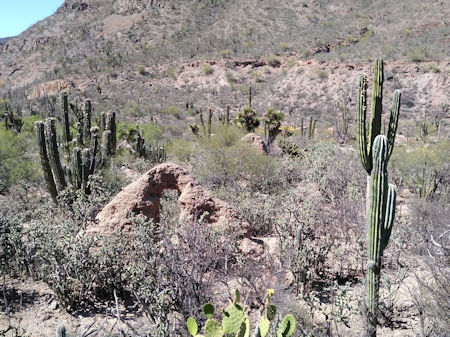
Very little detail has been written about these ruins. In 1906, Edward Nelson visited the site and he called it “Mission San Pablo”. During a 1949 expedition to document every mission, Marquis McDonald traveled by horseback from Rancho El Tablón to the ruins that he called “Dolores del Norte”. In the 1956 Lower California Guidebook, Howard Gulick and Peter Gerhard described a trail going into the mountains “to the tiny oasis and ruins of San Pablo, once a visiting station of Santa Gertrudis mission”. In the 1970s, Harry Crosby was researching the route of El Camino Real, as well as the numerous cave paintings in Baja California. Crosby describes the San Pablo chapel as 130 feet long by 21 feet wide and divided into three equal-size rooms. The adobe walls were built on a stone foundation. A massive stone corral is close to the chapel. Across the arroyo were the remains of an orchard and an irrigation system.
In the following four photographs, taken from approximately the same angle, we can see how the impressive ruins are slowly being reclaimed by desert vegetation and weathering over these 93 years. This remote location, on the Pacific branch of El Camino Real, was not even accessible by automobile until a few years ago and today remains secure, many miles beyond a locked gate.
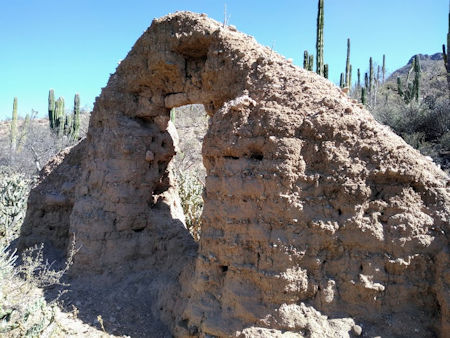
San Pablo is not easy to get to and for that reason it is documented in detail here, even if just for the reader’s curiosity. In May 2019, we had arranged in advance for a guide with the gate key. This road log is in miles. The drive in took three hours with the many gates to open and close plus the rough road in the canyon:
0.0 Highway 1 at Km. 154.5 (7 miles northbound from Vizcaíno).
11.8 Road north to Guillermo Prieto and Mission Santa Gertrudis. Continue east.
13.3 Big farm entrance. Turn left and go north around to the opposite side of the farm, and beyond.
16.7 Prosperidad, a small rancho and an old brick building from 1916. Head south on an old roadbed.
20.2 Locked gate at entrance to San Pablo Canyon (several unlocked gates are passed before this one).
23.6 Merge onto El Camino Real trail.
24.6 A Ford Ranger blocked the route ahead, take a road turning to the right.
25.1 El Datillo goat ranch (and an unlocked gate).
25.7 Merge back onto El Camino Real route.
28.2 Visita de San Pablo ruins. GPS: N 27° 42.13’, W 113° 08.70’/ Elevation 1,100’.
Rancho San Pablo is 1.7 miles beyond. San Francisco de la Sierra is about 10 miles up the canyon, as the crow flies.

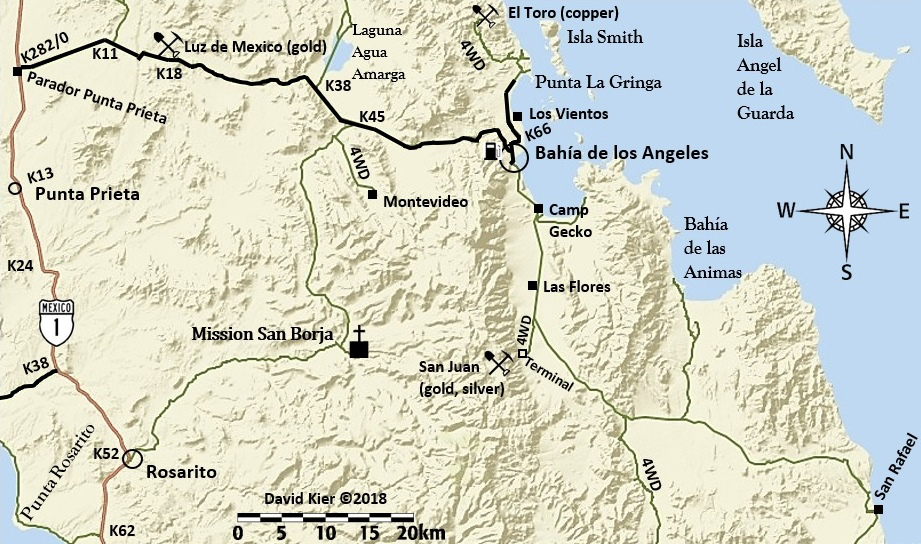
About David
David Kier is a veteran Baja traveler, author of 'Baja California - Land Of Missions' and co-author of 'Old Missions of the Californias'. Visit the Old Missions website.

Easy to use!! Very convenient!

Easy, dependable, and fast online insurance. Lots of travel info on website.

Insurance for our family car was competitively priced and very easy to order online. But how easy...